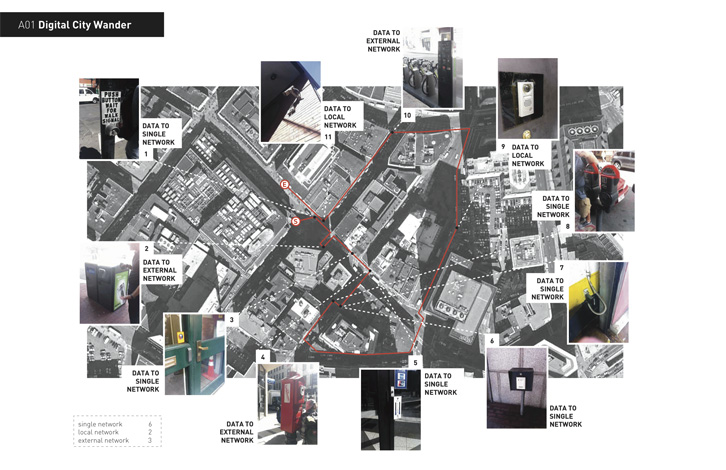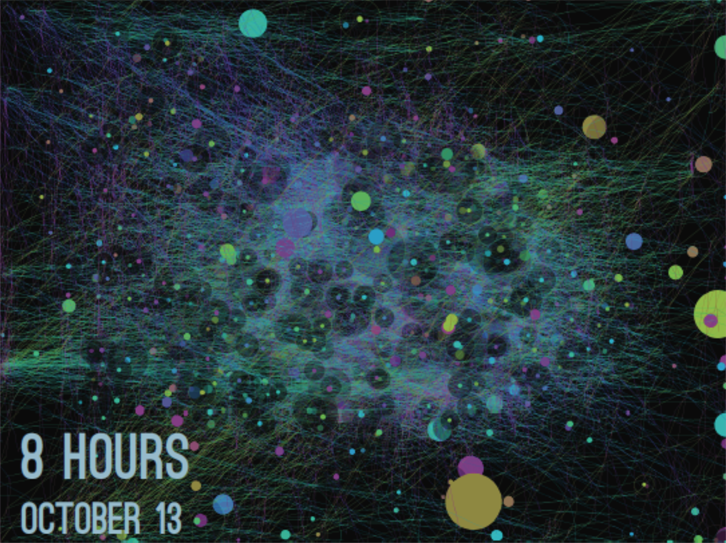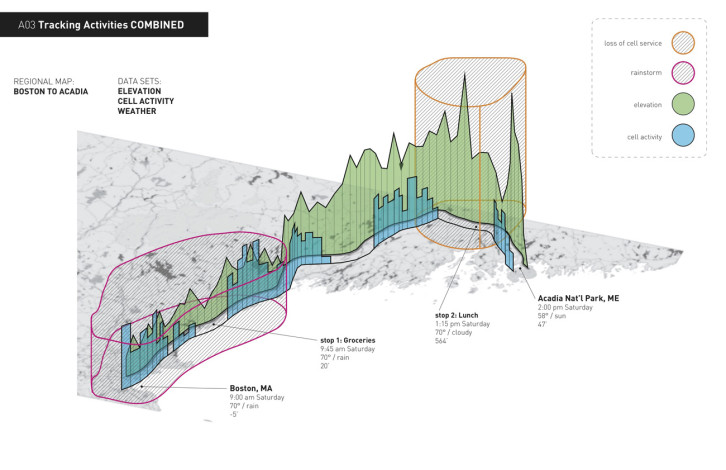This graduate course was offered at the Northeastern University School of Architecture in Fall 2014-15 and was a pilot for the subsequent course “Design of Information-rich Environments” that launched in the following semester in Spring 2014-15.
The seminar course was based on lectures, discussions and design exercises that introduced students to an array of critical themes and concepts for the creative work of Designers and Architects at the intersection of digital systems data and physical objects and space – the emerging domain of what can be referred to as urban computing or ambient informatics.
Each of the 13 weekly sessions was dedicated to a specific topic of particular interest to the work with digital technologies and the data resulting from it in an urban context.
During the course we were honored to welcome as guest speakers Lee Moreau, Principal at Continuum; Jonathan Carr, Department of Theatre at Northeastern University; Dan O’Brien, School of Public Policy and Urban Affairs at Northeastern University; Marshall Van Alstyne, Associate Professor at Boston University and MIT; Bryan Sivak, CTO at the United States Department of Health and Human Services.
Course Syllabus (pdf)
If you find this syllabus interesting or useful for your work, I’d be glad to hear from you.
Session topics
01. Introduction and overview
Introduction to and discussion of research and projects developed at MIT and the University IUAV of Venice in the realms of urban informatics, ambient computing, interaction design, information design. Overview of course structure and lecture topics.
02. Digital City Wander
We will be going on an exploratory walk in a specified area of the city of Boston equipped with photo cameras, paper and pencil. We will look for and critically observe all those instances in which the physical and the virtual connect in urban space. Where human activity and urban dynamics are converted into digital bits and where digital data manifest in perceivable ways.
03. Space
On how we perceive and inter-act with and within space and how this changes in the context of pervasive digital networks. On how to leverage and valorize both virtual and actual spaces in a new dialectic as part of architectural and design projects.
04. Time
On time as an artificial construct linked to cultural context as well as to the emergence of technologies that impact its perception. On working with the temporal dimension in the context of urban informatics, connotated by the co-presence of real-time information exchanges, historic data aggregations, and data driven future predictions.
05. Technologies for urban informatics
Focus on the technical components of urban informatics. On sensing, actuating, controlling, tagging, networking, displaying,… And on how to creatively work with these components in projects in urban space.
06. Activity
On how we act and what motivates and shapes our actions. On how components of information technology in our environment become agents in our interactions with them, with information, with space, and with each other.
07. Conversation
On real time interaction, cybernetics, complex systems, and conversations in urban space between and through pervasive information technologies.
08. Tools
On the nature of tools as human extensions, networks of equipment, mediators in activities, memory and virtualization of actions. And on the role of persistent structures, or of ‘the solid side’ of things in the Information Age.
09. Strategies for data driven projects
On strategies to engage multiple agents and organizations in projects that require joint data generation or data sharing and on how to creatively work with different data types as proxies for seemingly unrelated dynamics.
10. Boundary objects and digital platforms
Considering data as a boundary object insofar as that it has different meanings in different social worlds yet with a common enough structure to function as a means of translation between diverse realms. On the role of digital platforms and the development of tool networks for the creation of tools by multiple agent groups.
11. Identity and privacy
On what constitutes identity and the notion of privacy. On how digital information technologies impact these domains and contribute to modalities of expression and protection of identity.
12. Access and availability
On the nature and state of the digital divide and issues of accessibility to novel kinds of data driven services. On the phenomenon of blind spots in the digital information age or the territorial inconsistencies in digital data generation and coverage.
13. Summary and conclusion
Discussion of the project scenarios and the course book developed by students.
Summary of the course’s main points in relation to key issues that emerged during class discussions.
One-week Exercises
During the course, the students submitted and discussed writings on the topic readings and also developed short design exercises that addressed some of the session topics. These exercises were 1-week projects and more sketches of ideas and new approaches to explore implications and new boundaries linked to the in class discussions and readings.
Exercise: Mapping a digital city wander
With the material, insights and questions from our digital city wander, document, map and analyze those devices and systems in your city where human activity and urban dynamics generate digital traces and where digital information is made accessible to people in perceivable ways.
Identify, study and describe the technologies involved in the process of passing information from the physical dimension to the digital and vice versa (sensors, imaging technologies, audio technologies,…). In your analysis try to document a large number of observations collected in urban space and explore meaningful classifications and categories for these observations.


Exercise: Exploring personal time
Carry out different activities (read in a park, walk along a busy road, talk to someone, stroll along a street,…) and estimate the duration of 5 minutes. Compare your own estimation with the reading of a timer that you had running hidden from your view. How long are your personal estimates of 5 metric minutes? Carry out and document at least 5 such experiments.
Work in pairs with a colleague of yours. Your partner sets a timer for a specific duration (between 1-15 minutes). You carry out different activities in that time (as above), without having access to/view of any time measuring device. When the timer’s alarm goes off, estimate in metric time how long the interval was. Carry out and document at least 5 such exercises.

Exercise: Tracking activities
Using a smartphone or other digital device capable of monitoring location, acceleration, temperature,…, track your own movement and activities over the course of two days. Combine the resulting data traces with data from other time/location related information you can retrieve from personal (social networks, twitter,…) and public online sources and also integrate your own time/location specific notes about your activities.
In this way generate a rich data driven map of your activities over the two day period.
presentation: use data driven 3D technologies (3D printing, laser cutter,…) to represent the data you collected. integrate this structure with various media such as video, audio recordings, text, diagrams, maps, data visualizations,… to present the results of this assignment.


Exercise: Combining multiple sets of data
Using your data from exercise 03, work together as a class and integrate all student information into one comprehensive map/data visualization to illustrate the class’s activities over the course of the two days.

